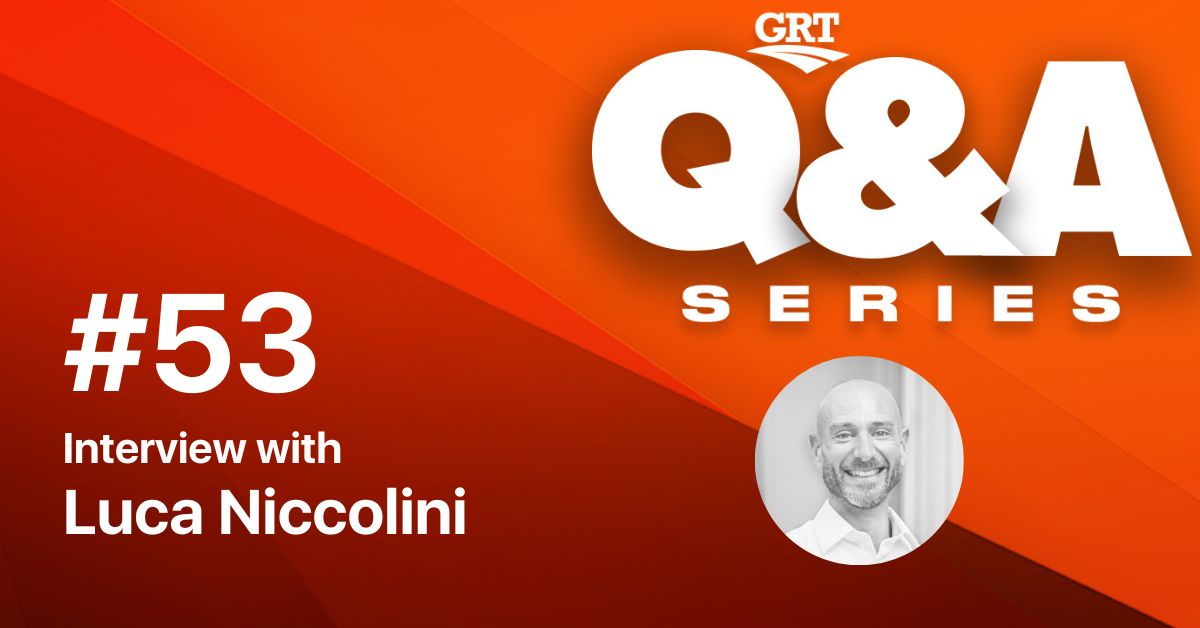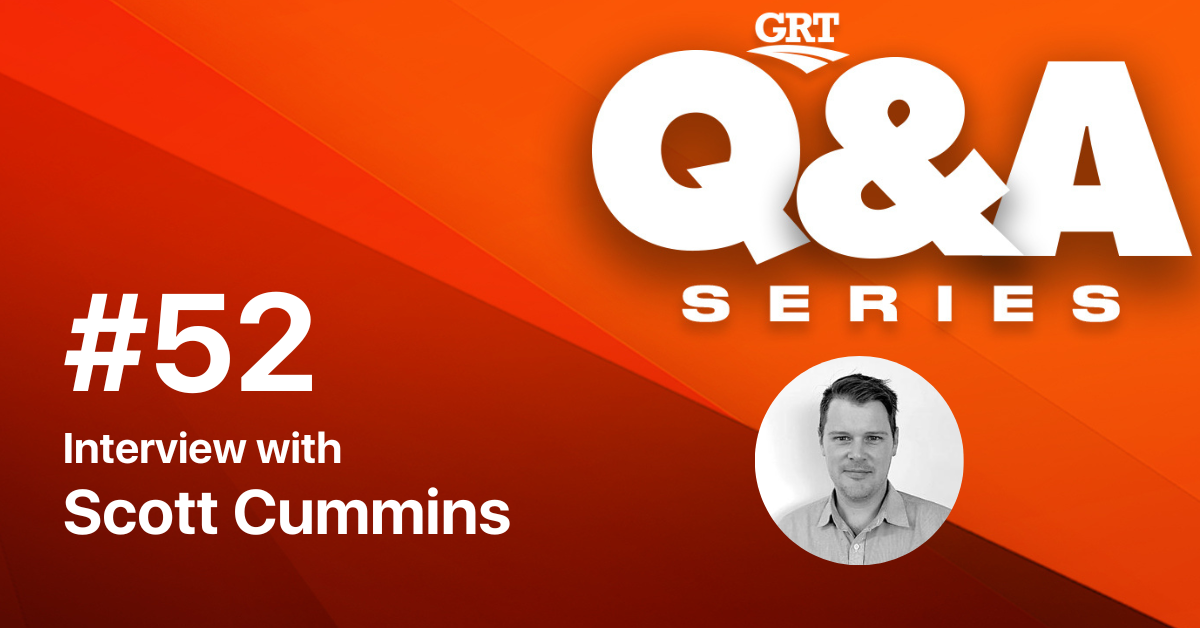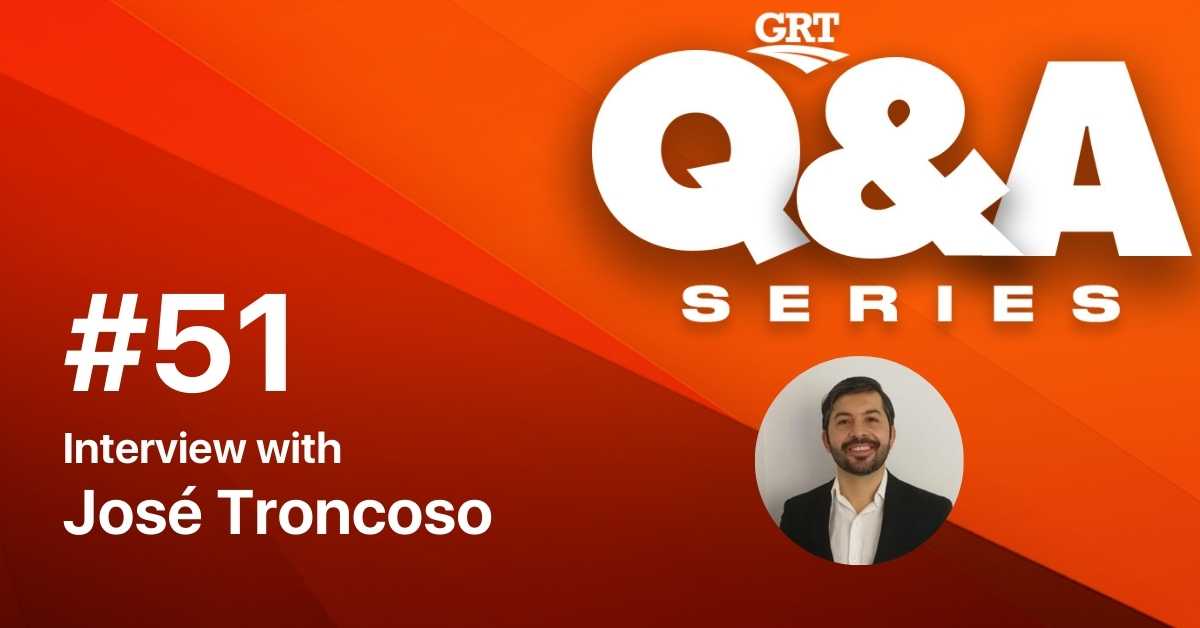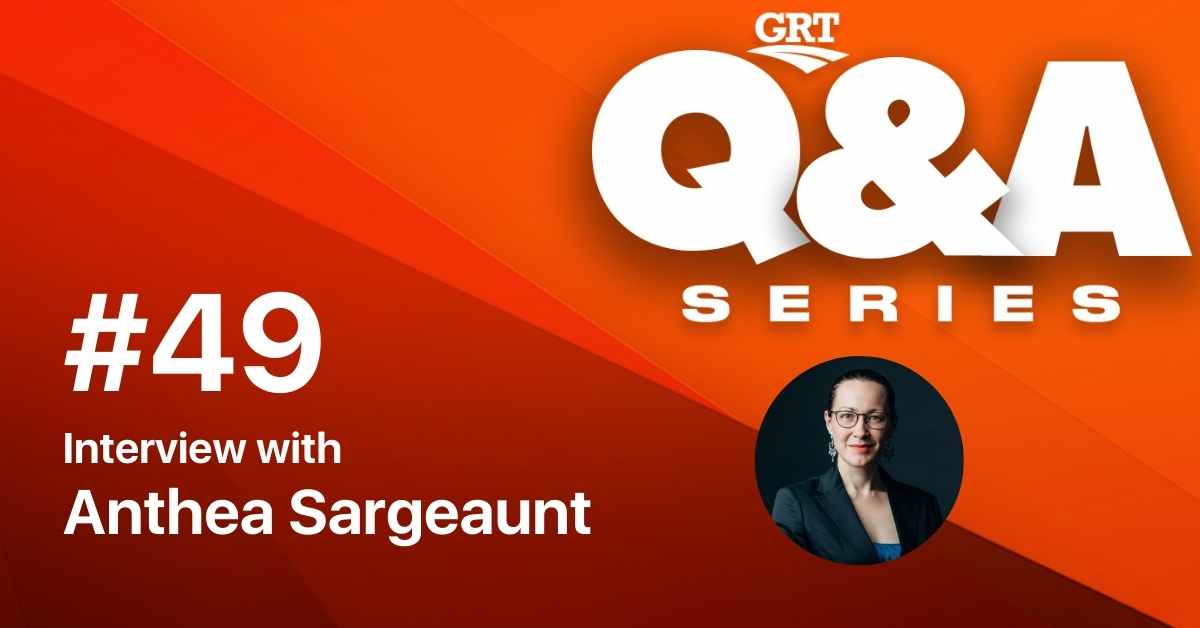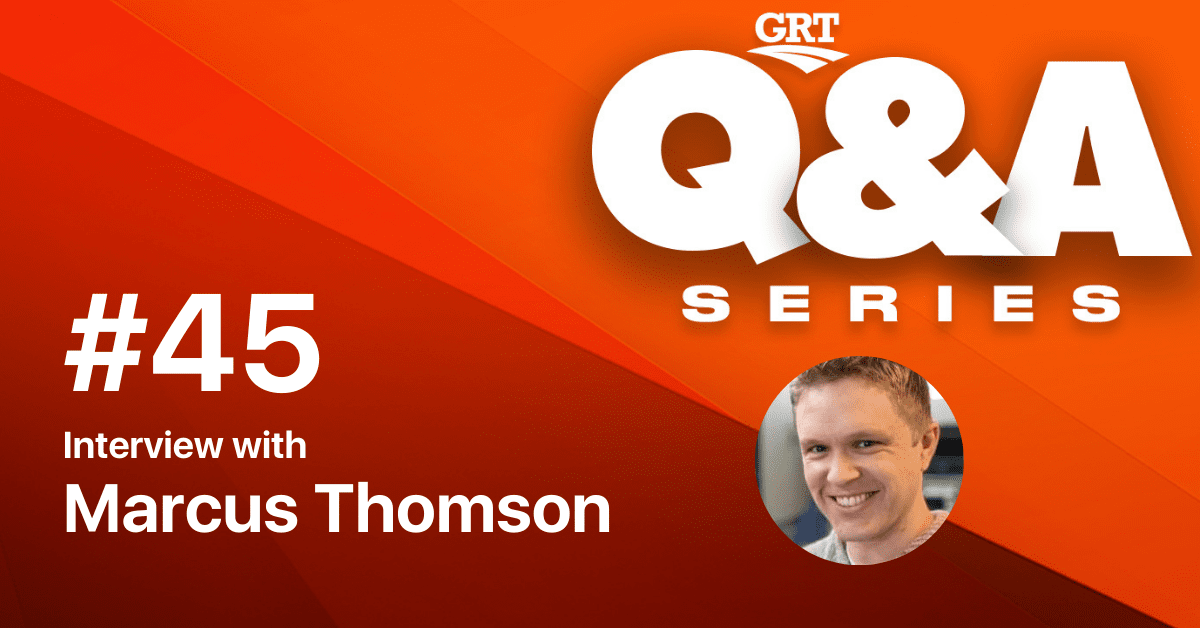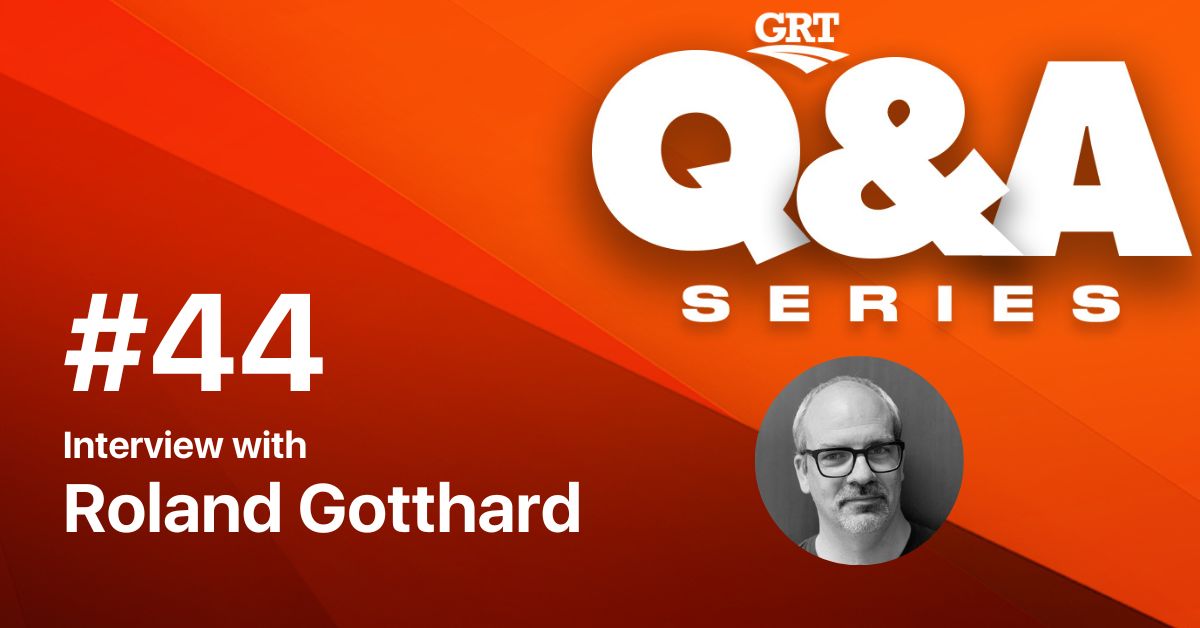Q&A Series #32: Interview with Jeff Erichsen

About the guest
Jeff Erichsen is an avid condition monitoring (CM) technology integrator and qualified Thermography trainer; having spent years in the field developing a holistic condition monitoring business called Infrared Inspections and Technologies or IIAT. The team at IIAT has amassed an image library of more than half a million thermal images containing more than a million data points that covers over 80% of the heavy mobile equipment OEM market. Our success in HME drove our customers to ask us to apply the same principles to fixed plant, draglines, and electric face shovels where we have for the past 6 years, gained significant data stacks from Infrared, Vibration and Airborne/Structure Borne Analysis. These analyses have provided our clients with predictive insights while our team is able to also offer pro-active maintenance solutions to assist their maintenance team in decreasing unplanned breakdowns and increasing component life by more than 30% in many cases. Realising the inherent value of the data sets, procedures, and analysis outcomes to industry worldwide, Jeff has spent the last 2 ½ years working on technological enabling solutions such as Augmented Reality and Artificial Intelligence to allow customers regardless of geographical location, access to IIAT’s image capture, analysis, and data insights.
Topic of discussion: Infrared thermography as a real-time solution to condition monitoring.
Infrared Inspections and Technologies (IIAT) is Australia’s leading mechanical infrared inspection and condition monitoring service provider. They specialise in heavy mobile equipment (HME) and fixed plant in the mining and quarrying industries.
On-site Services:
IIAT performs detailed analysis of heavy mobile equipment and fixed plant by performing Infrared Surveys on the equipment and then capturing the interpreted data in our ‘Track and Trend’ analytics program. This provides the client with a customised, detailed analysis and trend of every component on the machine or plant that the client requests.
Remote Reporting and Analytics Services:
If the client requires an interpretation and report service, IIAT can provide you with the correct thermal imaging equipment for the plant to be monitored, train your employees in the procedures of taking the images and through our server, interpret and report on the images through our track and trend system. This gives you the benefit of IIAT’s experience and systems without the cost of getting them to site.
Remote Monitoring:
There are a number of fixed camera solutions available with programmable military spec pan/tilt bases. If you require fixed placed monitoring for you plant, IIAT provides this solution.
Machine Vision Systems:
Improved vision for mobile machinery will reduce the instances of collisions and injuries due to unseen ground conditions. These cost-effective systems will provide preventions in injuries and machinery damage.
Global Road Technology caught up with Jeff Erichsen, Managing Director of Infrared Inspections and Technologies to discuss Infrared thermography as a real-time solution to condition monitoring. He is based in Torquay, Queensland in Australia.
Q1: Welcome to the GRT Q&A Series Jeff. It’s an honour and pleasure to have you. Can you please tell us more about Infrared Inspections and Technologies (IIAT) and what your role as Managing Director entails?
I started IIAT more than 9 years ago as a Diesel mechanic of more than 20 years and a newly trained Category 1 Thermographer with the idea of developing a system to increase component life and reduce downtime in heavy mobile mining equipment.
These days the system is very mature, with over half a million images and more than a million data points covering more than 80% of the OEM market and we have evolved into a fully functional holistic condition monitoring company covering mobile and fixed plant.
In fact, we boast having increased the life of bulldozer undercarriage components by 30% to 50% and providing our excavator clients with no unplanned downtime on attachment bushes and coolers over more than 5 years each. We have been very successful in the fixed plant arena as well as monitoring of draglines and electric face shovels.
My role in the business is R&D, being both research and development as well as replication and duplication. We are firmly focussed on the use of Augmented Reality to assist clients worldwide in the training of accurate data capture and the development of an AI based image analysis and reporting system.
Q2: What is Infrared Thermography and what are its applications in mining, quarrying, construction, oil, and gas, and in the military?
Infrared thermography (IRT) by definition is the viewing, capture, and analysis of radiated energy emitting from the surface of the object of interest using an infrared imaging device. I’d like to point out here that the device does not “see” temperature, it calculates it based on the correct operator inputs, which is where most thermographers fail. You must understand the concepts of emissivity and reflected energy and be able to calculate them in order to get an accurate temperature.
Q3: Condition monitoring and machine fault diagnostics are at the pinnacle of Infrared Thermography. What goes into developing systems and processes that ensure the delivery of outstanding results to your customer base?
Condition monitoring (CM) and reliability is a well-established field and to develop a successful IRT program that actually makes a difference to component life when looking at, I found using the following steps very helpful in delivering success for our clients.
- Understand what the component function is and how it works internally. This includes how it is lubricated and what affects the efficacy of that lubrication.
- Have a basic understanding of the lubricant itself. In the beginning, I asked a lot of questions about lubricants and was amazed by the differences observed with the IRT camera when a higher quality or more suitable lubricant was used.
- Determine what the components failure modes are and how that relates to the thermal energy emitted from the surface of the object i.e. one of the key understandings required for the successful delivery of a mechanical IR program is that the energy observed emitting from the outside of a large bearing housing (for example) is much less than the energy created at the point at which the energy is being generated. Much of this energy is lost through diffusion and conduction before it arrives at the measurement point on the surface of the object of interest.
- Determine the thermal patterns and temperature differentials that indicate the failure modes earliest point.
- Investigate the failure modes earliest possible remedial action. In most components we regularly monitor, 95% of the faults are caused by lubrication delivery issues.
- Recommend or deliver the remedial as soon as practically possible.
- Re-image components to ensure the action has positively impacted the failure mode.
What is different about what we do is that the machinery we work on is new to the use of infrared thermography and no severity standards existed, so a lot of time and effort was put into matching thermal patterns, temperature differentials, and pro-active maintenance interventions to achieve an outcome that was beneficial to the components. All in all, we repeated the processes above with each different machine and component type to ensure the desired outcomes were delivered.
Q4: Take us through the capture, processing and forensic analysis of semi-automated and automated images and the follow up diagnostics based on the various conditions being monitored in the field?
The capture of the data, for any CM process, but in particular for IRT is very important as it needs to be procedural and repetitive to ensure accurate analysis and trending. This has underpinned our success in this area as I spent a considerable amount of time in our start-up phase ensuring I was able to capture accurate data every time I collected it.
The next phase was understanding the failure modes of each component as well as the earliest intervention point and maintenance action to significantly dimmish or halt altogether the chance of failure.
Forensic analysis excellence is achieved through a combination of qualitative and quantitative analysis which is now also very procedural. We have ensured a repetitive quantitative outcome by establishing stringent Delta T (Temperature Differential) criteria for each component type. As always, follow-up imaging after corrective maintenance actions have been carried out has ensured the success of our program.
Q5: Challenges are there to be tackled and with continuous improvement, each opportunity presents your team with a mountain to climb. How have you dealt with the different challenges you faced as a team?
We have maintained a very simple approach to continuous improvement, which includes the introduction of new technologies, or the use of an existing technology in a new area of CM. This approach is data based and follows the same protocol each time.
- The person who has the idea does the research and comes up with a hypothesis on how they think it will work.
- We have a group discussion around the pros and cons of the improvement or technology and decide if we think it is worth pursuing.
- The hypothesis is tested until enough data is collected to build a use case and
- The group reviews the data and use case to determine if the improvement will be brought into our system and used in the business or presented to clients.
Q6: What still needs to be done globally to increase the applications of Infrared Thermography. Where is the need and what have you been doing to spread knowledge and awareness about the techniques used in Australia to the world?
This is a great question and within the question is in fact most of the answer. Knowledge and awareness can be summed up as education, with the biggest threat to the success of thermography as a whole and to a successful IR program on site is the lack of education. Regardless of the application and contrary to the belief of most who use thermography without any education, there is a significant amount of theoretical knowledge that must be translated into practical skills to obtain the most from this amazing tool.
For those who are “only looking for hot spots” it’s like the old saying “you can’t see the forest for the trees”. They really have no idea what they are missing, let alone build an inspection system that will allow the user to obtain consistent data to deliver tangible results.
As an educator and service provider in the area of thermography, I always try to do my best to spread the word about the uses of thermography, however one of the best things I have done is join the Australian Professional Thermography Association (AUSPTA), Australia’s leading not for profit organisation for thermographers, of which I am a proudly elected committee member. Another step our business has taken is to join and support the Australian Institute of Non-Destructive Testing (AINDT), though which we strive to have all of our employees 3rd party certified with to maintain the highest standards of quality. This also serves to continue to uphold existing expectations as well as setting a benchmark for new players in the business.
Q6: Let’s be futuristic! What do you look forward to and what is on the horizon for Infrared Inspections and Technologies?
Other than expanding the existing footprint, we have been working hard on two complimentary technology suites to cope with the national and international demand for our services while maintaining our exceptional quality standards and these are
- The integration of our Augmented Reality headset allowing us to offer worldwide data collection training which ties in with our IRLab, remote analysis service. This means that industrial businesses around the world will have access to our data capture procedures and methodologies to ensure the data they capture and send to us is of the same quality we would expect from one of our own technicians. Live remote mentoring and troubleshooting is also available where communications infrastructure exists.
- We have just completed the MVP of AI driven image processing system which is initially based on Hydraulic Excavators which is able to analyse and deliver individual component temperatures and comparisons.
These technologies will allow us to leverage our data library and scale our business expertise to deliver to a world-wide audience without the cost to our clients of having us visit site.
We are certainly excited about the future and appreciate the opportunity.
Find out more about CM technology: https://www.infraredinspectionsandtechnologies.com/
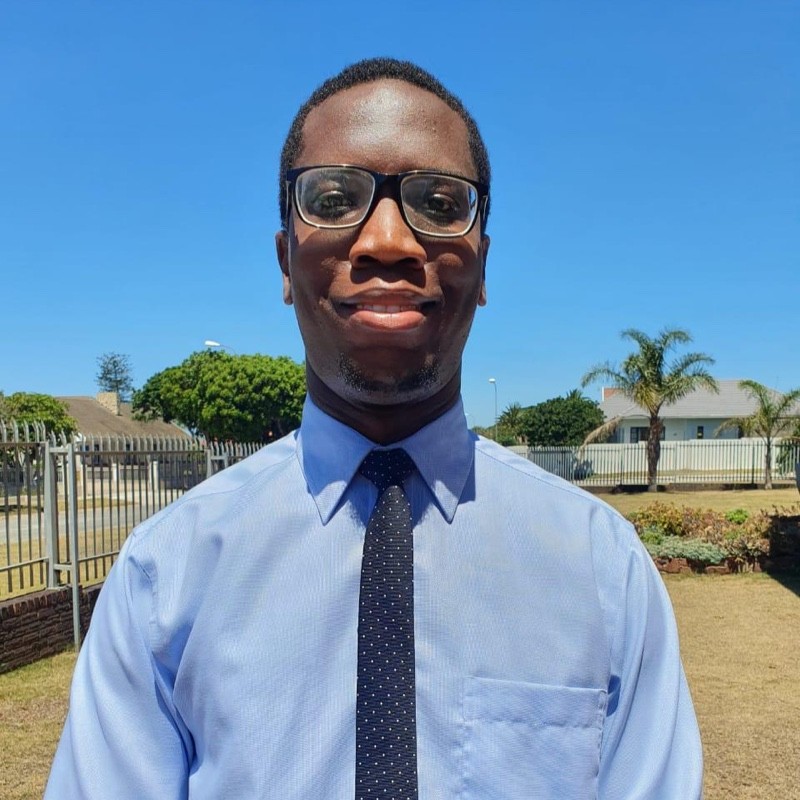
Keith Nare
Technical Head of Communications for GRT, Keith leads GRT's content strategy across various platforms, whilst coordinating internally to build the voice and opinions of the GRT team. Keith is a product of Nelson Mandela University and his PhD work focuses on Polymer and Physical Chemistry. He was a Research Associate at SANRAL in South Africa and later spent time as a Visiting Research Associate to NTEC at the University of Nottingham in the UK. He is a former Director of Communications for CALROBO in the USA.
Keith is passionate and enthusiastic about health and safety, sustainability, networking and finding synergy through conversations.
Related Interviews
MORE INDUSTRY ARTICLES
Nothing found.
